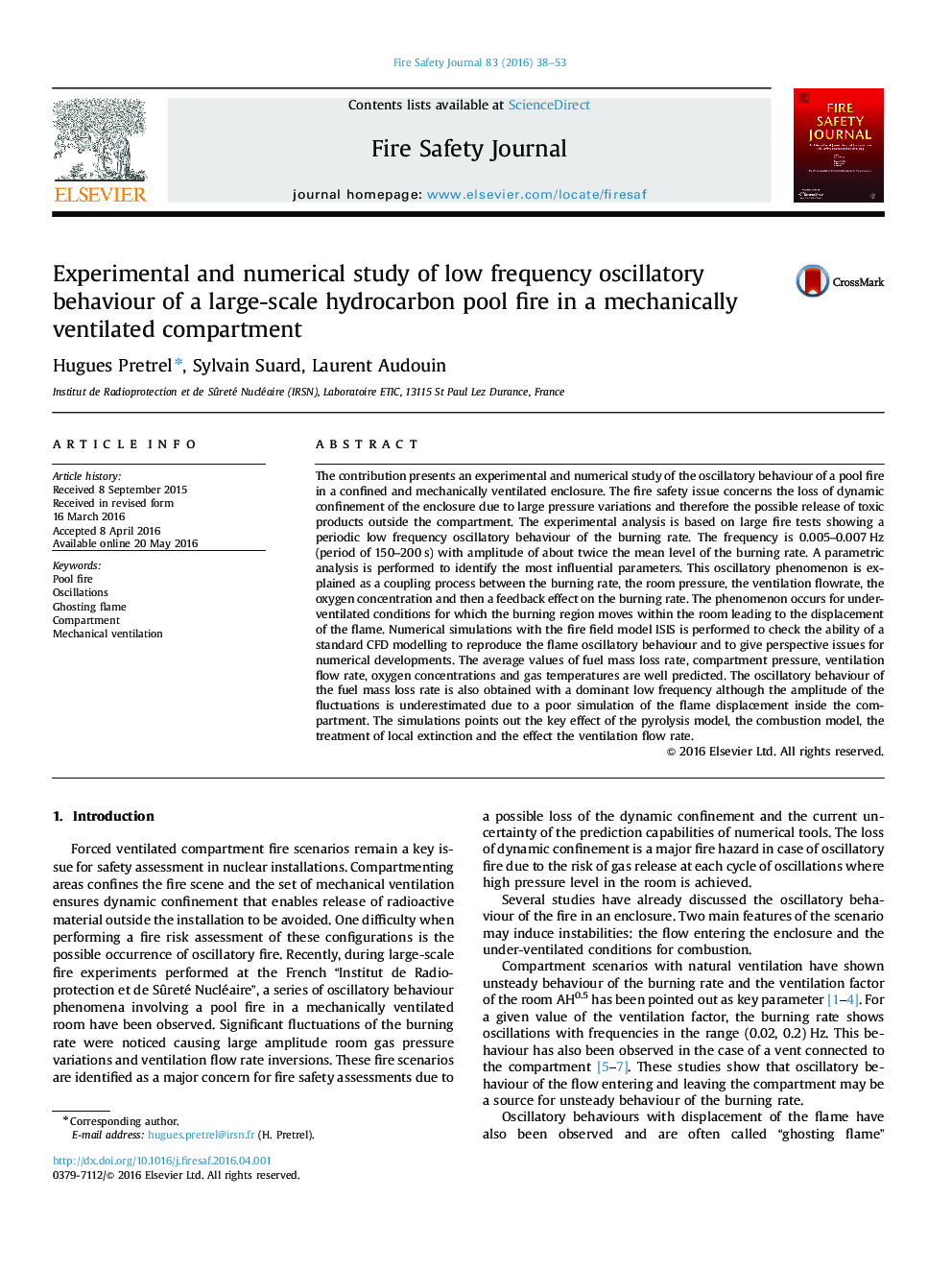| کد مقاله | کد نشریه | سال انتشار | مقاله انگلیسی | نسخه تمام متن |
|---|---|---|---|---|
| 269688 | 504693 | 2016 | 16 صفحه PDF | دانلود رایگان |
• Oscillatory behaviour of a pool fire in a confined and mechanically ventilated enclosure.
• Ten large pool fire tests show a periodic low frequency oscillatory behaviour of the burning rate of 5–7·10−3 Hz (period of 150–200 s) with displacement of the flame within the room.
• The oscillatory phenomenon is explained as a coupling between the burning rate and the admission ventilation flowrate and happens for under-ventilated combustion regime.
• Numerical simulations with CFD code ISIS show also dominant low frequency and are used to perform parametric analysis of the phenomenon.
The contribution presents an experimental and numerical study of the oscillatory behaviour of a pool fire in a confined and mechanically ventilated enclosure. The fire safety issue concerns the loss of dynamic confinement of the enclosure due to large pressure variations and therefore the possible release of toxic products outside the compartment. The experimental analysis is based on large fire tests showing a periodic low frequency oscillatory behaviour of the burning rate. The frequency is 0.005–0.007 Hz (period of 150–200 s) with amplitude of about twice the mean level of the burning rate. A parametric analysis is performed to identify the most influential parameters. This oscillatory phenomenon is explained as a coupling process between the burning rate, the room pressure, the ventilation flowrate, the oxygen concentration and then a feedback effect on the burning rate. The phenomenon occurs for under-ventilated conditions for which the burning region moves within the room leading to the displacement of the flame. Numerical simulations with the fire field model ISIS is performed to check the ability of a standard CFD modelling to reproduce the flame oscillatory behaviour and to give perspective issues for numerical developments. The average values of fuel mass loss rate, compartment pressure, ventilation flow rate, oxygen concentrations and gas temperatures are well predicted. The oscillatory behaviour of the fuel mass loss rate is also obtained with a dominant low frequency although the amplitude of the fluctuations is underestimated due to a poor simulation of the flame displacement inside the compartment. The simulations points out the key effect of the pyrolysis model, the combustion model, the treatment of local extinction and the effect the ventilation flow rate.
Journal: Fire Safety Journal - Volume 83, July 2016, Pages 38–53
